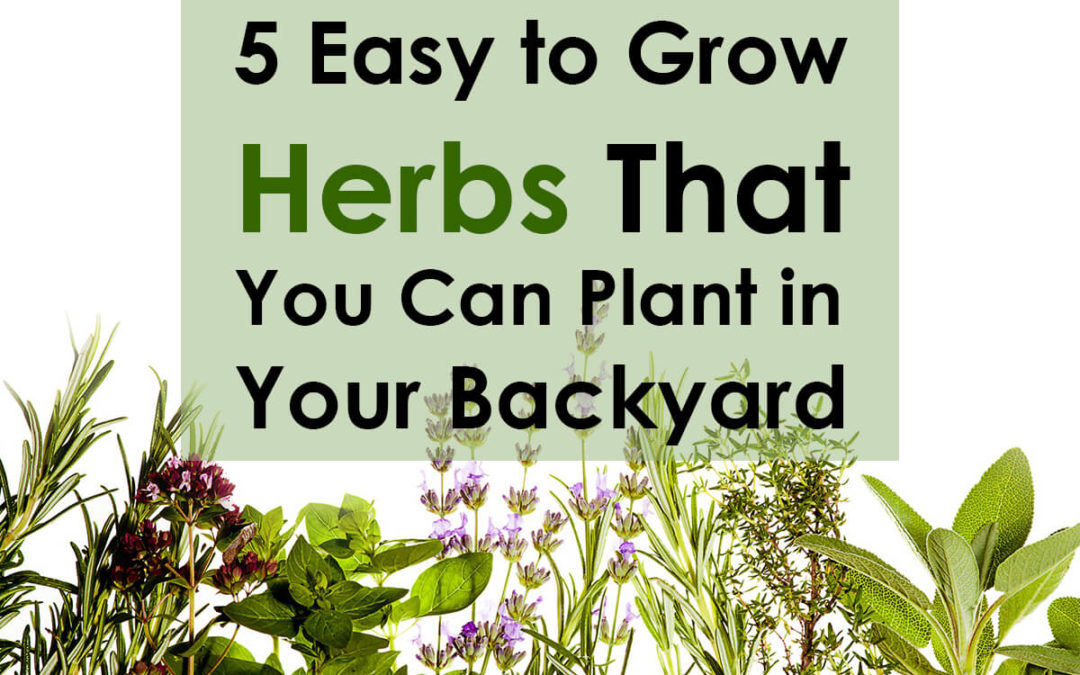With everyone going gaga over all things organic or healthy these days, the logical thing to do, for homeowners or those who have too much time on their hands, is to create your own medicinal herbs patch in your garden. This way, you’re assured a reliable supply of herbs and of course, their freshness and “organic-ness.”
While growing herbs might sound like a tricky business, some herbs are naturally hardy and can be grown almost anywhere. That is, with sufficient sunlight and hydration. There are also herbs that are low-maintenance, requiring only the bare minimum. To get you started on this project, we picked out five medicinal herbs that are hardy and easy to grow for your medicinal herbs patch in your backyard.
A hardy herb that can be found growing almost anywhere with well-drained and light soil, chamomile is perhaps best known for its tea. It is a small plant, growing up to 8-16 inches. The flowers of this herb are small, daisy-like and can be eaten raw. The leaves are light-green in color and a bit feathery, while the whole herb has a sweet and almost pineapple-y scent.

Chamomile has plenty of medicinal benefits, chief among them are its anti-inflammatory, antibacterial, and sedative properties. It can also be used for treating inflammation of the digestive tract. Wounds can also be treated by chamomile. Other than tea, chamomile can also be used as an additive to bath water.
Mostly used for culinary purposes, the oregano is an herb that belongs to the mint of Lamiaceae family. This herb has been used in both medicine and cooking for thousands of years. It certainly adds flavor to various dishes and have many health benefits to boot. This herb typically grows to around 50cm tall and has leaves that are 2-3cm in length.

Oregano has been traditionally used to treat respiratory tract disorders, urinary tract disorders, gastrointestinal complications, and menstrual cramps. This herb, when applied topically, can also help treat skin conditions such as dandruff and acne.

 One of the most potent superfoods, bitter gourd is a vegetable that’s filled to the brim with medicinal benefits. It is well-known, however, for its anti-diabetic properties and the infamous bitter taste. Despite the bitter taste, this vegetable is particularly famous in India, where it is known as Karela, and in the Philippines, where it is known as Ampalaya. Aside from traditional dishes, it is also used as the main ingredient of herbal supplements for diabetes.
One of the most potent superfoods, bitter gourd is a vegetable that’s filled to the brim with medicinal benefits. It is well-known, however, for its anti-diabetic properties and the infamous bitter taste. Despite the bitter taste, this vegetable is particularly famous in India, where it is known as Karela, and in the Philippines, where it is known as Ampalaya. Aside from traditional dishes, it is also used as the main ingredient of herbal supplements for diabetes.
Among its many health benefits is the very low-calorie count (17 calories per 100 grams) and the bitter gourd’s pods are rich sources of phytonutrients like vitamins, minerals, antioxidants, and dietary fiber. This superfood is also an excellent source of folates and polypeptide-p or plant insulin, a compound that naturally lowers the body’s blood sugar level.
A classic Mediterranean seasoning, thyme is mostly used for gourmet food. Thyme is an herb that grows evergreen in most gardening zones. It is very easy to grow, only requiring sunlight and a well-drained soil. Also, unlike other herbs, thyme grows best when transplanted rather than seeded. It is a small herb, never growing higher than 30cm.

Aside from potentially lowering blood pressure, thyme has been used traditionally as a cough remedy. It can also help boost the body’s immune system since it is packed with Vitamins A and C. Other than that it can also be an organic mood-booster.
Often mistaken as peppermint, basil is a fragrant herb that is usually used for seasoning various kinds of dishes. This aromatic herb also belongs to the mint family, the same as other herbs filled with nutrients such as oregano, mint, and rosemary. Among other things, it is also very calorie-light, it only has 22 calories per 100 grams.

A very potent antioxidant, basil contains a wide array of essential oils that are rich in phenolic compounds, and several other organic compounds such as polyphenols, flavonoids, and anthocyanins. This herb also has anti-inflammatory properties and other nutrients that are very important to cardiovascular health.
A Medicinal Garden
While they may look very time-and-work-consuming at first, having your very own medicinal garden eventually pays for itself. You don’t need to run to the supermarket or the farmer’s market for every herb that you missed buying. And this will probably make you eat healthy since the presence of so many fresh ingredients might very well spur you into cooking dishes that include them.



